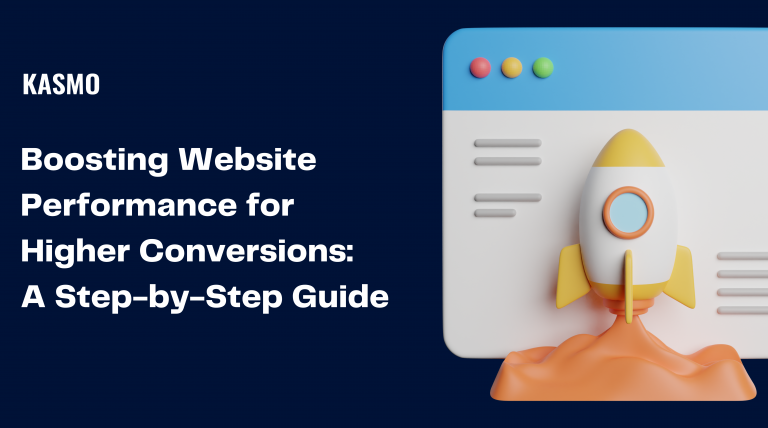In today’s digital age, a website’s performance is crucial in keeping visitors engaged and driving conversions. In this guide, we will walk you through a step-by-step process of how you can improve your website’s performance for higher conversions, and how Kasmo, a boutique IT consulting firm, can help you achieve this.
Step 1: Understand Your Baseline
The first step in improving your website’s performance is understanding your current site performance and user behavior. Tools such as Google Analytics can provide insights into your website’s traffic, user behavior, and conversion rates. Understanding these metrics will help you identify areas that need improvement.
Step 2: Improve Page Load Speed
Page load speed is a critical factor in user experience. A slow-loading website can lead to high bounce rates and low conversions. Tools like Google PageSpeed Insights can help identify issues that are slowing down your website and provide recommendations for improvement.
Step 3: Optimize Media Files
Large media files can significantly slow down your website. It’s important to compress and optimize images and videos to improve load times without compromising quality.
Step 4: Use a Content Delivery Network (CDN)
A CDN can help decrease load times by storing copies of your site at different points of presence (POPs), allowing users to access your site from a location closer to them.
Step 5: Implement Lazy Loading
Lazy loading is a technique that delays the loading of images or other content types until they are needed. This can significantly improve load times, especially for websites with a lot of media content.
Step 6: Minify JavaScript and CSS
Minification is a technique that reduces the size of your code without affecting its functionality. Minifying JavaScript and CSS can help improve load times and overall site performance.
Step 7: Prioritize Above-the-Fold Content
The content that appears before scrolling should load first. This ensures that users have something to interact with immediately, improving user experience and potentially increasing conversions.
Step 8: Optimize for Mobile
With more people accessing the internet via mobile devices, it’s essential to ensure your site is responsive and optimized for mobile users.
Step 9: Use HTTP/2
HTTP/2 is a newer protocol that allows for faster content delivery. It can improve load times and overall site performance.
Step 10: Regularly Monitor and Optimize Your Site
Website performance optimization is an ongoing process. Regularly monitor your site performance and make improvements as necessary.
How Kasmo Can Help
Kasmo is a trusted partner in designing, implementing, and driving transformational digital experiences. Our expertise in digital engineering and analytics enables us to provide comprehensive solutions to improve website performance and drive conversions.
With Kasmo, you can leverage our expertise to create a high-performing website that drives higher conversions, leading to increased revenue growth and customer satisfaction. Contact us today to learn more about how we can help you optimize your website performance for higher conversions.
Also Read:-Improve Your Business ROI By Leveraging Salesforce Marketing Cloud

